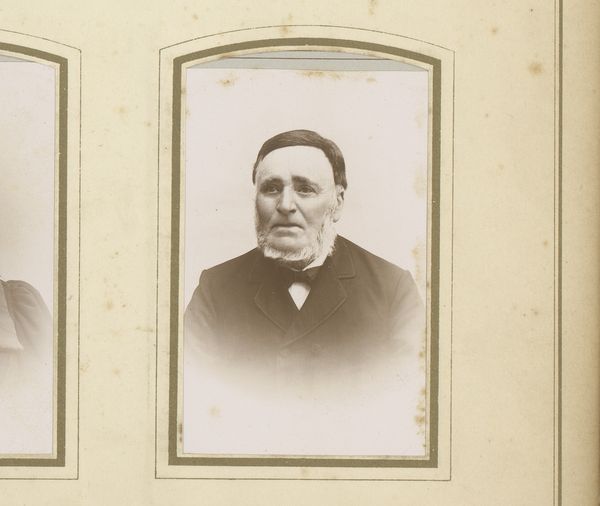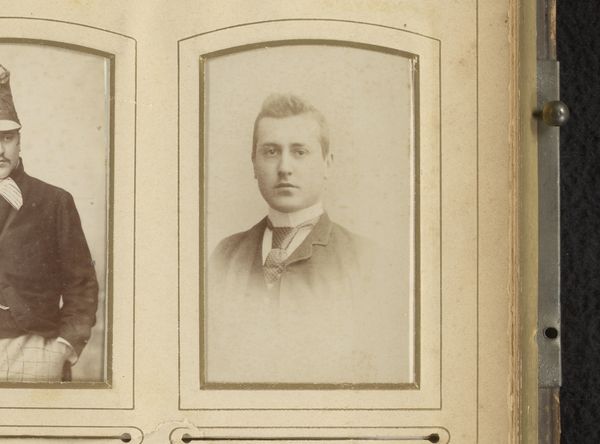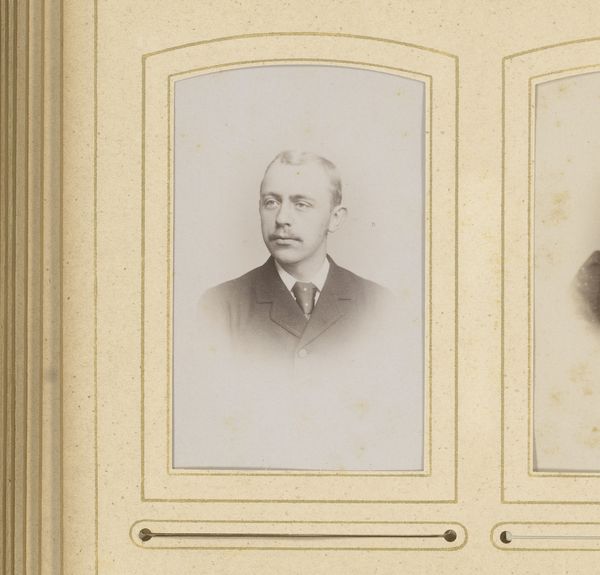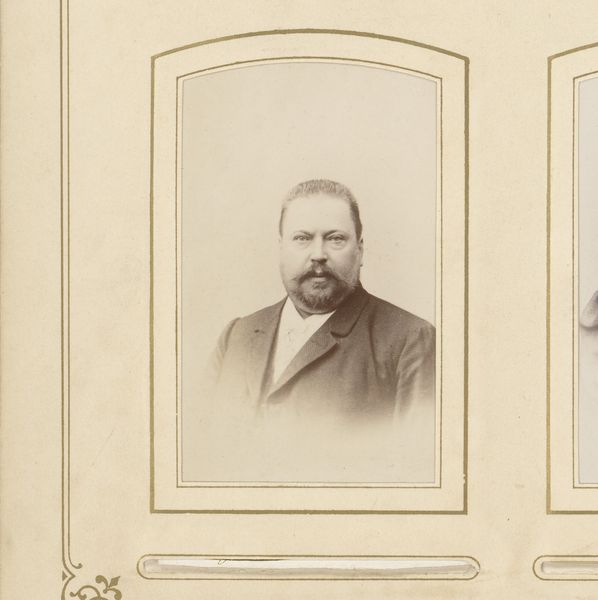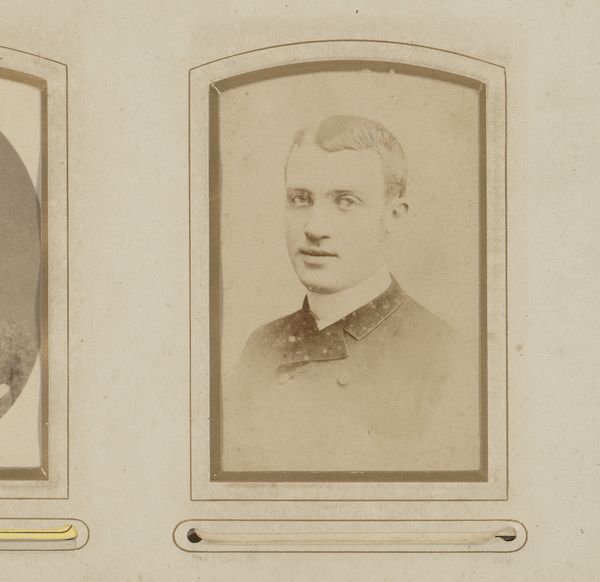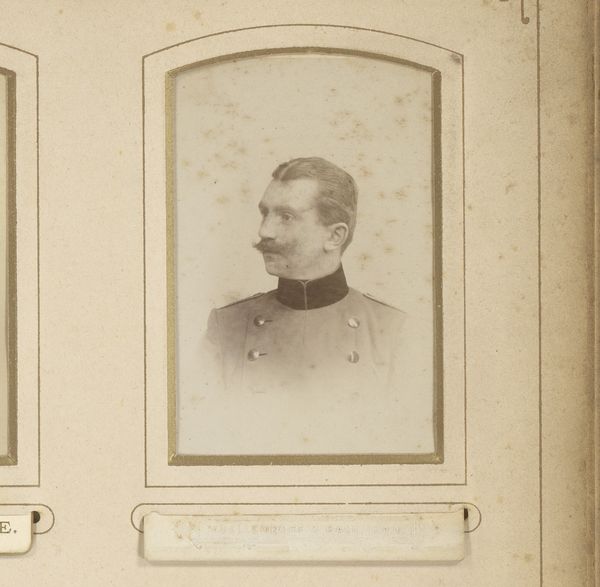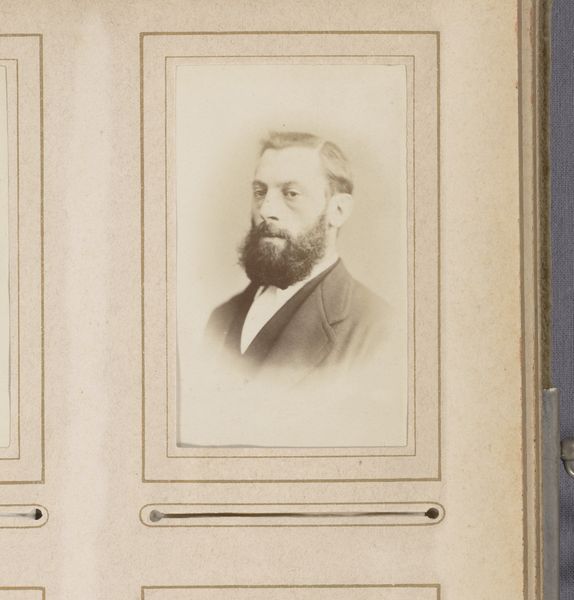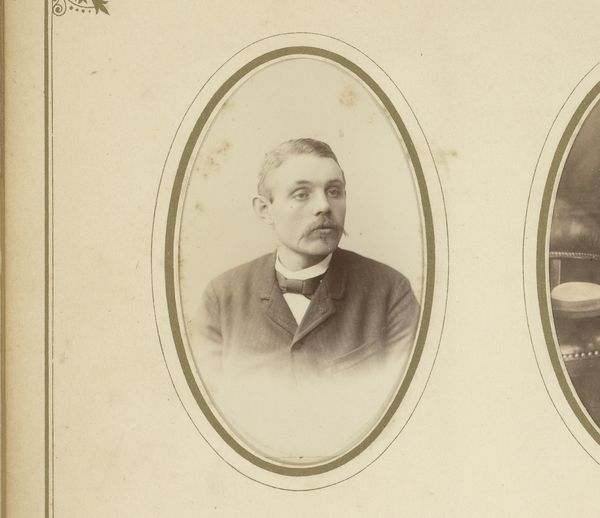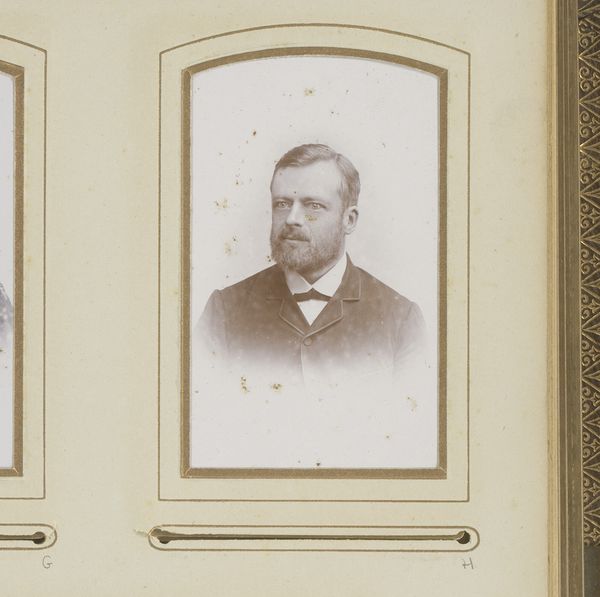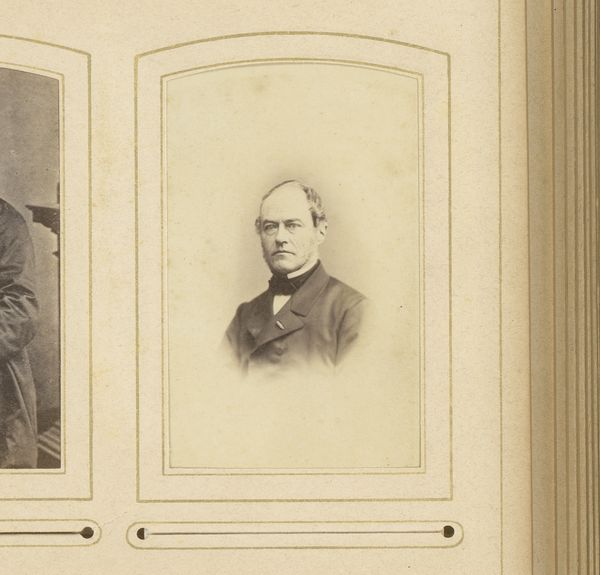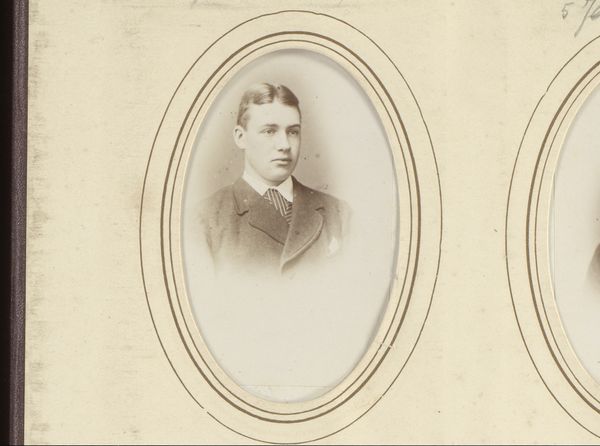
photography, gelatin-silver-print
#
portrait
#
photography
#
gelatin-silver-print
Dimensions: height 87 mm, width 53 mm
Copyright: Rijks Museum: Open Domain
Curator: This gelatin-silver print, dating from around 1860 to 1900, captures a man with a beard and spectacles. The work is attributed to the Sanders Brothers. The overall tone feels very direct, almost austere, doesn’t it? Editor: Austere, certainly, but I see a profound vulnerability. The gaze is quite intense through those spectacles, suggesting a man deeply engaged with the world, and perhaps burdened by it. Curator: That vulnerability is fascinating when we think about photography's evolving role in the late 19th century. These kinds of portraits became quite popular. They provided an affordable way for people from various socio-economic backgrounds to document their existence and present a desired image to the public. Editor: And what image is he attempting to project, or what role is he trying to assume? The beard and glasses read intellectual, even professorial. Considering societal expectations of men at the time, the photograph reinforces a notion of educated respectability. What's interesting is the relative simplicity of the portrait itself - there aren’t a lot of distracting embellishments here. Curator: Exactly. It speaks to a wider narrative within photography: moving from an exclusive tool to one capturing diverse swathes of society. This man’s social status might be upper-middle class; judging by his clothing and the photograph itself – which only wealthy people were able to have done. He uses this technology to cement his position within society. Editor: So you're suggesting the act of being photographed itself becomes a social performance, a tool for solidifying social standing. This makes me wonder about the broader implications for understanding identity. Can we really read his interiority through this portrait, or is it mostly a staged construction shaped by cultural forces? I ask this because perhaps we could view it with a feminist lens that uncovers how this portrait operates to confirm this person as a member of the bourgeoisie? Curator: I agree that's certainly an important interpretation and something to question and consider. It also highlights that portraits like these are important for understanding the social and visual culture of the period. Editor: This little photographic print ends up becoming a complex intersection of technological advancement, social aspiration, and carefully constructed identity. Fascinating how a simple image can unlock so much.
Comments
No comments
Be the first to comment and join the conversation on the ultimate creative platform.
